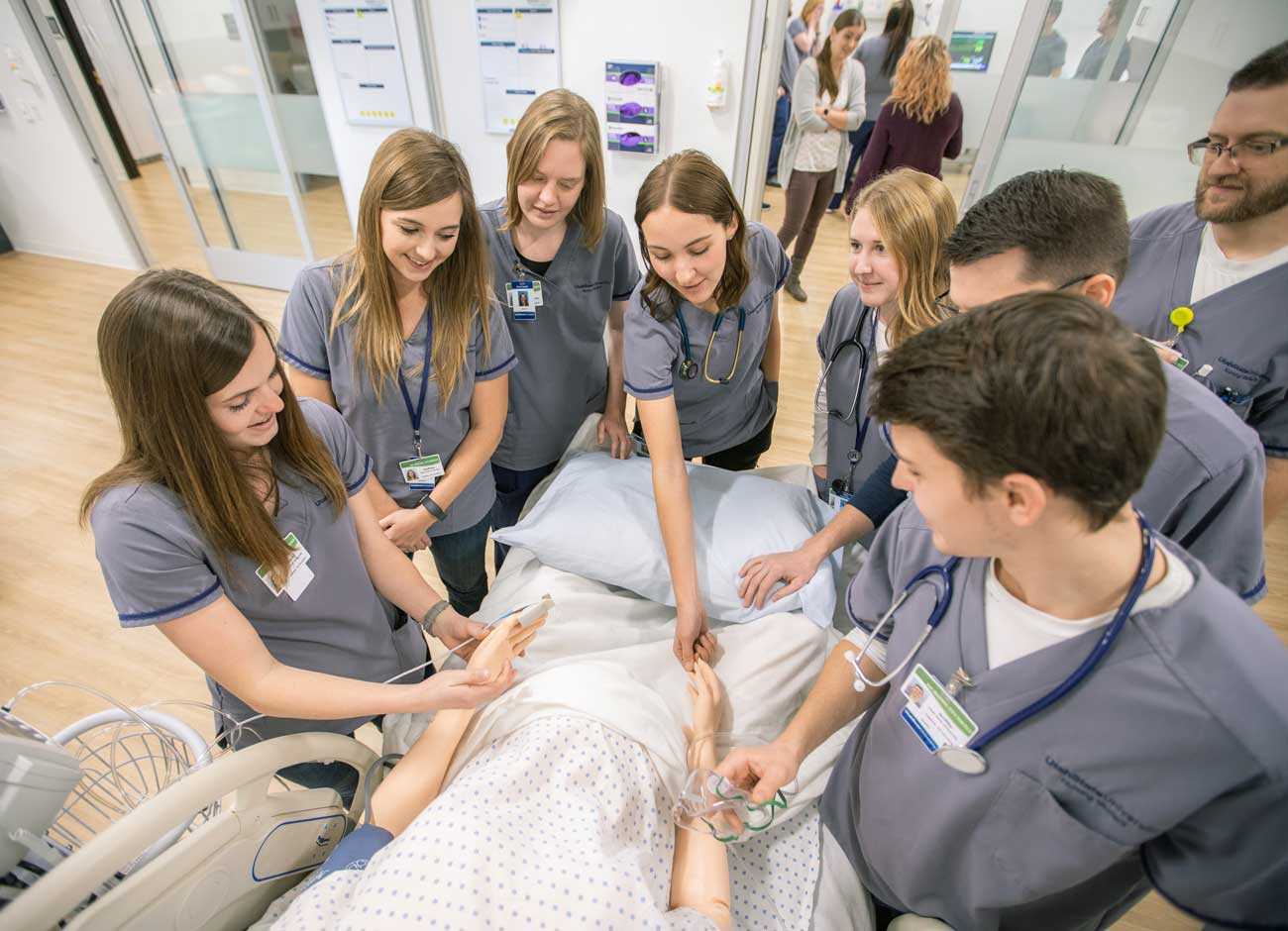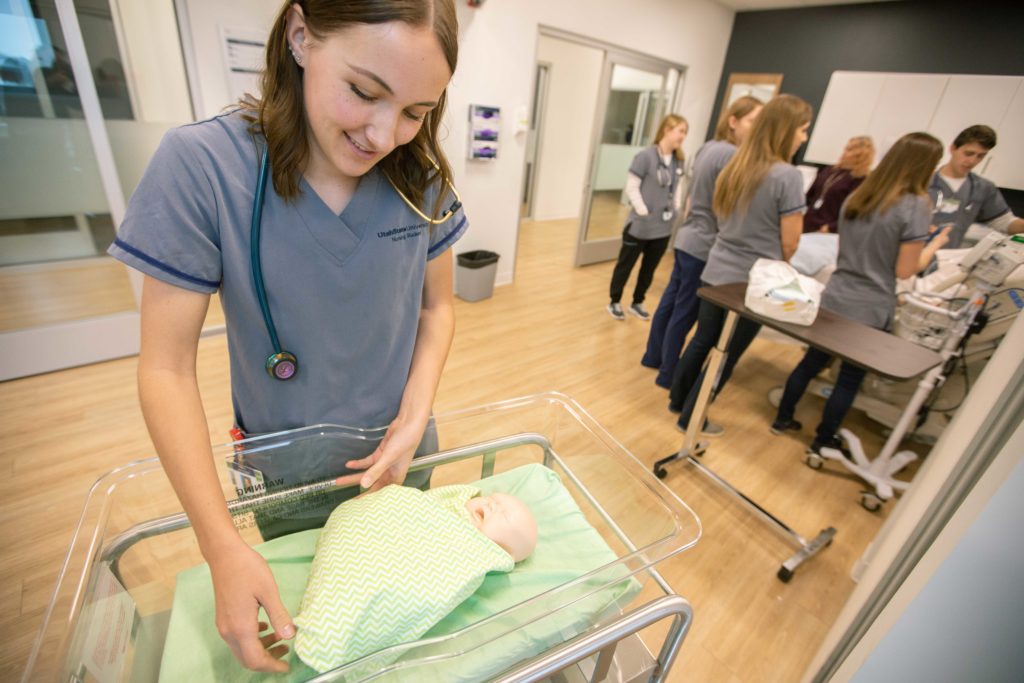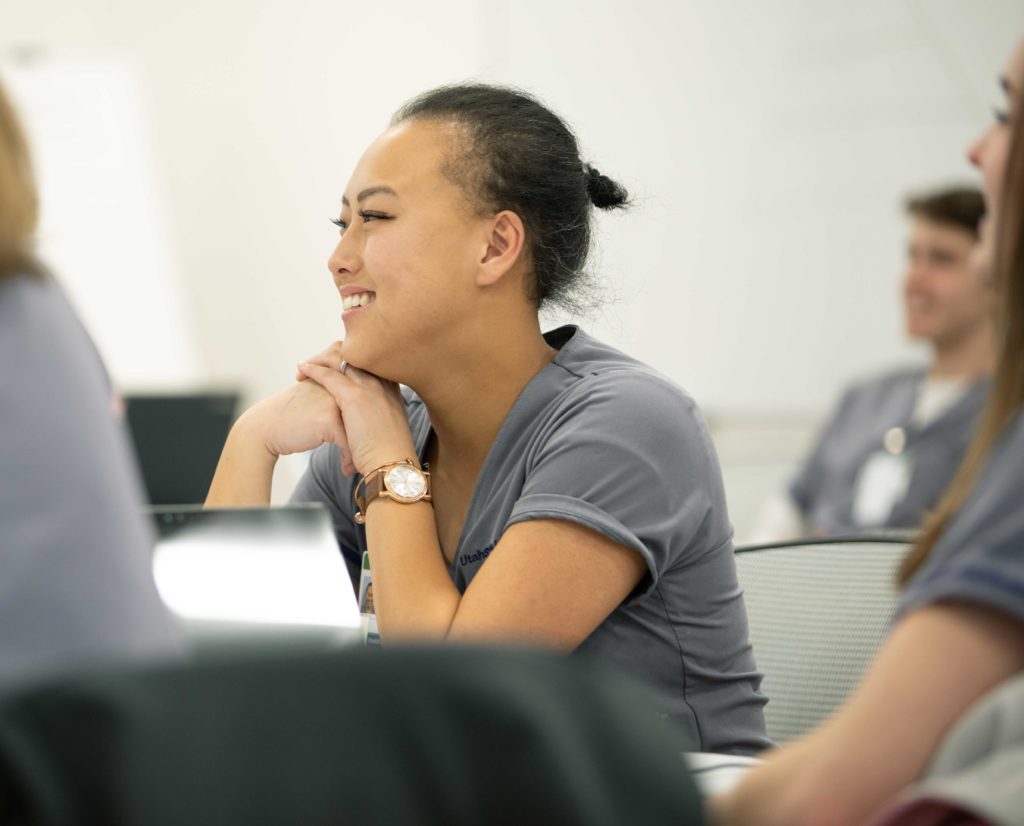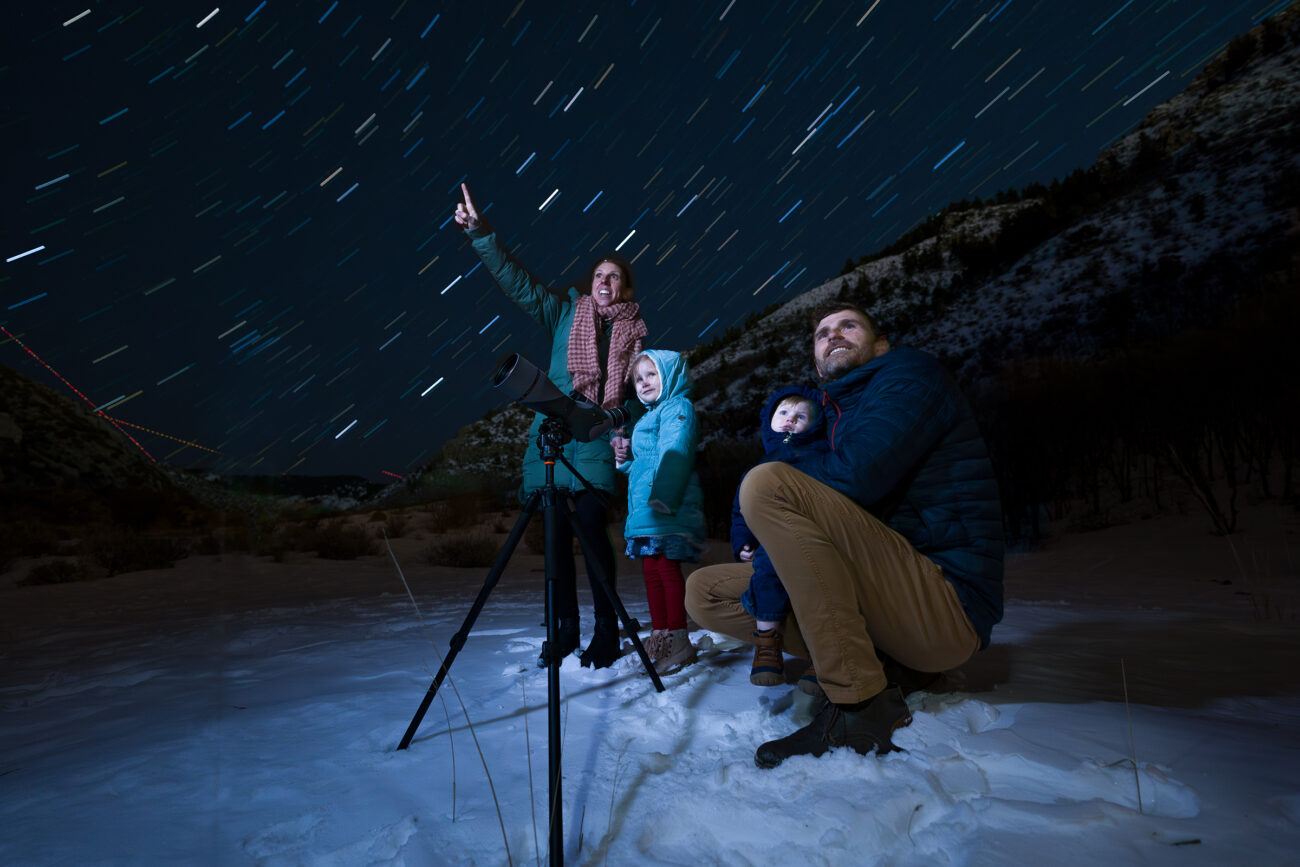The Face of Care: Nursing Students Embrace Work on the Front Lines

The hands of a nurse can carry knowledge and experience to a fragile human body at a critical juncture.
The tenderness of those hands can comfort us during some of the most difficult moments in our lives. We know that nurses are often the personalized face of care in the American healthcare system. But at the beginning of 2020, no one knew just how urgently our nation would need its nurses. For decades, Utah State University has sustained outstanding nursing programs at some of its statewide campuses.
In fall 2017, the first cohort of students entered a new nursing program on the Logan campus, housed in the Emma Eccles Jones College of Education and Human Services. In spring 2019, not only did 100% of the cohort graduate, but every student passed their National Council Licensure Examination (NCLEX) exam on the first try. “That is very unusual for a first cohort,” says Carma Miller, head of the nursing department. “It speaks to the quality of both our students and our instructors.”
In another indicator of that quality, 100% of those students were employed in a nursing profession within a few months of graduation. One of those students, Raegan Sassner, earned her Bachelor of Nursing (BSN) degree and now works in in Aurora, Colorado in the transplant/hepatology unit of the Anschutz Medical Center, caring for both transplant donors and recipients.
Sassner is excited to be a part of the “new life” she sees every day. She recalls how the instructors at USU taught her to trust herself. “I see now, as a nurse, that you’re with the patient 12 hours of the day, so you know your patient. My USU instructors were amazing because they taught me to use my intuition and to speak up if something feels off.”
Students enter the program as juniors after completing prerequisite courses and general education courses and then learn management of care, evidence-based practice, population health, health information management, pharmacology, family health, leadership and management, and completing their capstone. The program began in response to high demand in the community for baccalaureate prepared nurses as well as high student demand for a BSN. Nationally and statewide, the nursing profession is moving toward the baccalaureate degree as the entry-level degree for registered nursing. Acceptance is competitive; 30 students are admitted each year. There are currently 400 pre-nursing majors on the Logan campus, and USU is working to double the number of students admitted annually.
The nursing skills laboratory on the Logan campus includes four state-of-theart simulation rooms equipped with high fidelity mannequins to simulate various medical conditions. The mannequins look like people, but are actually intricate computers that simulate medical events and respond accordingly to the treatments they are given. They exhibit vital signs, have heart attacks, bleed, give birth to smaller mannequins, and even yell “ouch” when they detect that a procedure is not handled gently.

USU nursing student Chrissy Douglas swaddles a high fidelity baby mannequin in the Nursing Simulation Suite. Photo by Russ Dixon. All images were taken in 2019 before the COVID-19 pandemic.
These state-of-the-art mannequins support hands-on teaching from experienced nurse educators, along with a wide variety of clinical experiences. As Sassner recalled her experience at USU, she gave particular credit to instructor Jeanette Harris. “Jeannette took time to explain the deep background of why nurses do certain procedures, and she taught me the importance of empathy and communication, with both patients and doctors. I have already seen how well a patient progresses with great communication, and how a lack of it can actually impede their recovery.”
Nursing instructors at USU are known for the personal investment they make in their students’ education. But Miller related how the students also impressed their instructors when the COVID-19 pandemic hit. Many senior capstone students were already in the midst of clinical preceptorships in medical/surgical, labor and delivery, ICU, and emergency departments. “Our students enthusiastically embraced the opportunity to make use of the skills they learned during the past two years while doing full-shift clinicals with progressively more responsibility,” she says. “Many of our students set and achieved their goal to take over the entire patient load of their nurse preceptor.”
That experience is already paying huge dividends for nursing students, their patients, and their employers. Jessica Stock, a recent graduate who now works at the University of Utah Hospital with acute medicine and surgical patients, including COVID-19 patients, says she felt well prepared. “USU’s nursing program helped me face uncertainty with confidence. I have no qualms asking for help from more experienced nurses because of the way my instructors approached learning. They taught me with patience and kindness, using mistakes as a learning experience.
“At USU, I learned that being a nurse is about caring for patients. That might sound obvious, but it is so much more than just distributing medications or performing nursing skills,” says Stock. “My instructors helped me understand that my patients need to feel safe, understood, validated, and heard. That matters more than whether their medication is one minute late or a dressing change took longer than it should have. Having that understanding helps me navigate a busy workload at the hospital and end my day feeling accomplished and good about my contribution as a nurse.”
“At USU, I learned that being a nurse is about caring for patients. That might sound obvious, but it is so much more than just distributing medications or performing nursing skills.”
– Jessica Stock.
Nursing students are now at the front lines of the university’s fight against COVID-19 as they staff its own on-campus testing site. “President Cockett is a forward thinker,” says Miller. “At the beginning of the pandemic, she was already making innovative plans to contain the virus; she had the brilliant idea to transform the Utah Veterinary Diagnostic Lab into to a human testing lab. After much effort, we received federal and state approval, and we now have the capacity to conduct 400-plus tests per day.”
The new testing site is housed in the ticket center east of the Maverik Stadium. With a large parking lot, easy access, signage, and barricades, nursing students can approach the waiting cars and administer tests (while those without vehicles can walk up to the auxiliary tent).
As industrial heaters rumble away to keep them from freezing during long hours in the winter air, nursing students wearing layers of personal protective equipment are meticulous and efficient with each step of the procedure. They exude kindness towards every individual in the near-ceaseless succession of cars.
“Our BSN students are excited to be providing this service,” says Miller. “We worried that they might fear exposure to the virus, but instead they were eager to be a part of it. It took a great deal of work, but we were able to obtain all the necessary personal protective equipment.” Each weekday, five students and their clinical teachers staff the site. They provided over 750 hours by the end of October and, one week in November, tested more than 1,800 USU students and employees. Miller praised the students’ dedication and professionalism.

Baylee Dusenberry listens to a lecture in the nursing laboratory. Photo by Russ Dixon.
“They know they are making a difference in the real world, and it matures them quickly. A major aspiration of our BSN students is to become proficient in real-life patient care, and with this testing site, they are not only getting a face-to-face clinical experience, but one that is very relevant.”
The nursing program is rapidly growing, too. In fall 2020, a much needed online Registered Nurse (RN) to BSN completion program was granted accreditation by the Accreditation Commission for Education in Nursing and currently enrolls 45 students per semester. The program is designed for licensed RNs who want to pursue their degree while balancing work and other life responsibilities.
“This is a great opportunity for USU to expand its commitment to educating professionals by providing working RNs the ability to achieve their career and educational goals while continuing to live in, work in, and contribute to their local communities,” says Miller. “Many students begin their nursing education at the associate degree level and complete their general education requirements at community colleges before transferring to RN to BSN completion programs.”
The online RN to BSN completion program provides convenient advancement opportunities for nurses in rural areas to help meet industry needs. The program is completely online to help students remain in their local communities while completing their education. USU is also working to address nursing shortages through its statewide programs in Blanding, Moab, Price, Tooele, and the Uintah Basin, where it has sustained exceptional nursing programs for the past 50 years.
Paige Brooks earned her BSN on the Logan campus and is now in a Ph.D. program at the University of Utah to become a psychiatric and mental health nurse practitioner, where she will practice therapy, diagnose mental health disorders, and prescribe medication. While completing her Ph.D., she also works as a nurse at a residential treatment center in Brigham City for teenage boys struggling with addiction and behavioral issues.
“USU’s nursing program has so many strong traits, but its best assets are the instructors,” says Brooks. “The entire program is run by passionate, experienced, smart nurses. They offered me real-world experience that helped me understand the academics, and they gave me confidence in my ability to help people.”
By Rebecca Dixon ’08
All images were taken in 2019 before the COVID-19 pandemic.






